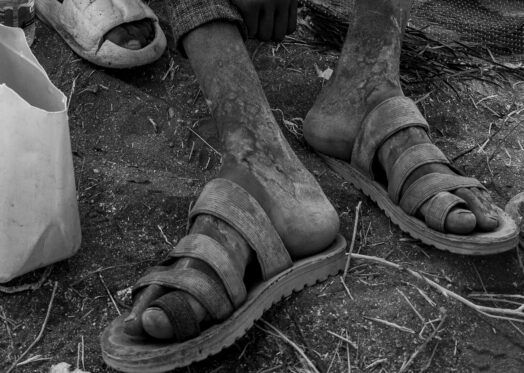Between guns and migrants

What a hell of a place! Djibouti is a scorched slice of volcanic rock at the mouth of the Red Sea, an inhospitable place lacking natural resources, inhabited by nomadic tribes and a small urban population. But the tiny former “Territoire français des Afars et des Issas” possesses a priceless treasure: a geographic location of crucial strategic importance, not only for the West.
Thirty percent of the volume of international shipping containers and three-quarters of Persian Gulf oil and gas for Europe sail through the Bab al-Mandab Strait, the “Gateway of Laments”, which is no more than 16 nautical miles in width. After the outbreak of war in Gaza, Yemeni Houthi raids on ships bound for Israel prompted the European Union to deploy a naval task force alongside a similar, more offensive multinational deployment run by the Pentagon. But the Djibouti outpost was already well prepared. Since the al-Qaida attack on the Twin Towers in September 2001, the small but stable presidential republic in the Horn of Africa has been transformed into an armed fortress: a mega-barracks housing the largest number of foreign military bases on the planet. The only place in the world where the two great rival superpowers, China and the United States, face each other and spy on each other closely.
The U.S. base at Camp Lemonnier, home to the Central Command for Operations in Africa, houses the commandos of the Pentagon's special counterterrorism units and Rapid Action Forces and has a huge air and naval warfare arsenal. It sits close to the military base where the French Army has replaced the Foreign Legion, which first set boots on the ground here in 1884. Less than four miles away, the red flag of the People’s Liberation Army flies over China’s first and only military base abroad.
In the last two decades many other countries have landed in this hub for the world’s superpowers at the crossroad of Africa, Asia and the Middle East: Japan, Italy, Spain, Germany have built their barracks; Turkey and Saudi Arabia are also on the way.
I’ve been here in the past, covering the Legion and the wars in Ethiopia and Yemen. So I know where to hang in town and get the feel of it: La Chaumière, on Menelik square, is the place to be. The restaurant, half-destroyed in 2014 by an al-Shabab suicide bomber and immediately rebuilt by Abouye Wang, the owner, is a meeting joint for soldiers, speculators, spies, aid workers, diplomats, smugglers and fixers engaged in licit and illicit trades. Thomas Kelly, the former American ambassador here, compares Djibouti to the Casablanca of the 1940s. Late at night, as in any city-garrison, contractors, sailors and military personnel on liberty flock to the red-light nightclubs of rue d'Éthiopie in search of girls.
By day, the town looks like an endless construction site: new banks, shopping centers, five stars hotels, apartment buildings. China, the leading investor, rules the biggest infrastructure works: the Doraleh multipurpose port, the commercial free zone, the new aqueduct, the high-speed railway to Addis Ababa.
Speculation has even reached Moucha, the once island-refuge for the French smuggler and writer Henry de Monfreid. But there’s also another Djibouti: that of the miserable slums of the Balbala neighborhood, and that of migrants fleeing countries at war, haunted by insecurity, hunger and periodic droughts.
I meet them after driving a junky rented off-road vehicle through the moonscape of the country's interior. They pass through the blinding salt expanse of lake Assal, where informal miners dig into the scorching crust and fill sacks of “white gold” for the dromedary caravans heading to Dire Dawa. Those who have no money for the smugglers are forced to walk, with a water bottle in hand. Many die of hardship on the trail that wedges between the mountains and the Tadjoura plain.
I reach Obock, where a discolored sign points to the house of Rimbaud, now a salt-eaten ruin: the poet spent his last years of life here trafficking arms, ivory and coffee with the Ethiopian rulers. Some migrants hang out on the pier hoping to catch a ride on a dhow bound for Yemen, but because of the war and the military ships patrolling the Strait, boats are now rarer and far more expensive. Others go further north on a sandy track between the desert and the sea.
I follow them to the village of Mulhula, close to the Eritrean border. At dusk they watch in anguish the green and red lights of passing ships. Maybe they’ll find a cheaper passage on a fishing boat. Maybe they’ll survive. Maybe they’ll reach Dhubab, on the Yemeni coast: the last stop on the dreamed journey to the Saudi El Dorado.





